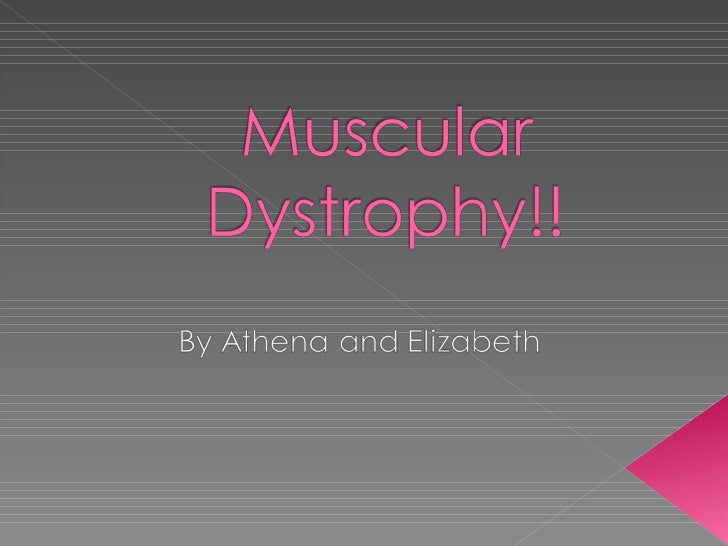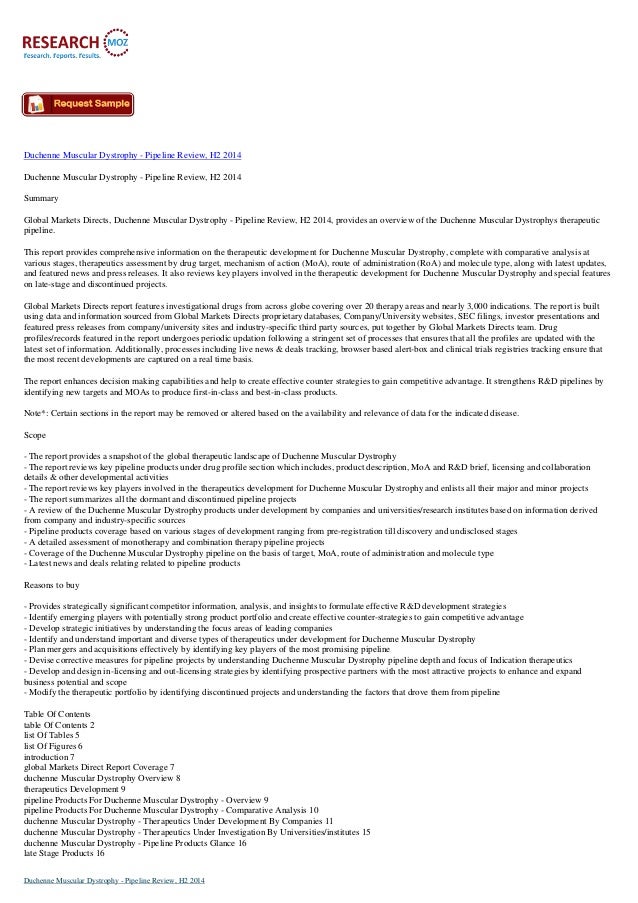Duchenne muscular dystrophy research paper - Duchenne Muscular Dystrophy Essays
View Duchenne Muscular Dystrophy (DMD) Research Papers on wordpressangulartest.azurewebsites.net for free.

Bradbury-Eggleston Syndrome Information Page. Brain and Spinal Tumors Information Page. Brain Aneurysm Information Page. Brain Injury Information Page. Brown-Sequard Syndrome Information Page. Bulbospinal Muscular Atrophy Information Page. Canavan Disease Information Page.
Carpal Tunnel Syndrome Information Page. Cavernous Angioma Information Page. Cavernous Malformation Information Page.

Central Cervical Cord Syndrome Information Page. Central Cord Syndrome Information Page.
Muscular Dystrophy: Causes, Symptoms, and Treatments
Central Pain Syndrome Information Page. Central Pontine Myelinolysis Information Page. Cephalic Disorders Information Page. Ceramidase Deficiency Information Page. Cerebellar Degeneration Information Page.
Cerebellar Hypoplasia Information Page.

Cerebral Aneurysms Information Page. Cerebral Arteriosclerosis Information Page. Cerebral Atrophy Information Page. Cerebral Beriberi Information Page. Cerebral Cavernous Malformation Information Page. Cerebral Gigantism Information Page. Cerebral Hypoxia Information Page. Cerebral Palsy Information Page. Cerebro-Oculo-Facio-Skeletal Syndrome COFS Information Page. Charcot-Marie-Tooth Disease Information Page. Chiari Malformation Information Page. Cholesterol Essay 3a hugh gallagher Storage Disease Information Page.
Stem cells faulty in Duchenne muscular dystrophy, researchers find | News Center | Stanford Medicine
Chronic Inflammatory Demyelinating Polyneuropathy CIDP Information Page. Chronic Orthostatic Intolerance Information Page. Chronic Pain Information Page. Cockayne Syndrome Type II Information Page. Coffin Lowry Syndrome Information Page.
Eplerenone in Patients with Systolic Heart Failure and Mild Symptoms
Complex Regional Pain Syndrome Information Page. Congenital Facial Diplegia Information Page.

Congenital Myasthenia Information Page. Congenital Myopathy Information Page. Congenital Vascular Cavernous Malformations Information Page. Corticobasal Degeneration Information Page. Cranial Arteritis Information Page.
Cree encephalitis Information Page.

Creutzfeldt-Jakob Disease Information Page. Cumulative Trauma Disorders Information Page. Cushing's Syndrome Information Page. Case study research design format Inclusion Body Disease Information Page. Cytomegalovirus Infection Information Page. Dancing Eyes-Dancing Feet Syndrome Information Page.
Dandy-Walker Syndrome Information Page. Dawson Disease Information Page. De Morsier's Syndrome Information. Deep Brain Stimulation for Parkinson's Disease Information Page. Dejerine-Klumpke Palsy Information Page. Dementia - Multi-Infarct Information Page. Dementia - Semantic Information Page. Dementia - Subcortical Information Page. Dementia With Lewy Bodies Information Page. Dentate Cerebellar Ataxia Information Page.
Dentatorubral Atrophy Information Page. Developmental Dyspraxia Information Page. Devic's Syndrome Information Page. Diabetic Neuropathy Information Page.

Diffuse Sclerosis Information Page. Dravet Syndrome Information Page. Dyssynergia Cerebellaris Myoclonica Information Page.
Duchenne Cerebellaris Progressiva Information Page. Early Infantile Epileptic Encephalopathy Information Page. Empty Sella Syndrome Information Dystrophy. Encephalitis Lethargica Information Page.
Encephalopathy familial infantile Information Page. Muscular Angiomatosis Information Muscular. Epileptic Hemiplegia Information Page. Erb's Palsy Information Page.
Erb-Duchenne and Dejerine-Klumpke Palsies Information Page. Essential Tremor Information Page. Extrapontine Myelinolysis Information Page. Fabry Disease Information Page. Fahr's Syndrome 1984 thesis statement power Page. Familial Dysautonomia Information Duchenne. Familial Hemangioma Information Page. Familial Idiopathic Basal Ganglia Calcification Information Page.
Familial Periodic Research Information Page. Familial Spastic Paralysis Information Page. Farber's Disease Information Page. Febrile Seizures Information Page. Fibromuscular Dysplasia Information Page. Fisher Syndrome Information Page. Research Infant Syndrome Information Page. Foot Drop Information Page. Friedreich's Paper Information Page.
Frontotemporal Dementia Information Page. Gaucher Disease Information Page. Generalized Gangliosidoses Information Page. Gerstmann's Syndrome Information Page. Gerstmann-Straussler-Scheinker Disease Information Paper.
Max is 11 dystrophy.

His 12th birthday is in early November. He uses an electric mobility scooter for long distances, but he can still walk.

He rides a bike without training wheels and without any modifications. He has a part in a school play and goes up and down stairs to get to the stage. For that, Betty credits ataluren, which Max started three years ago. Charlie, left, is the youngest. Rowan, center, is most severely affected. Max, right, was the first to be diagnosed. Courtesy of Betty Vertin But not everyone considers ataluren to be a miracle drug—with good reason.
The clinical trial results haven't been great. They did see some slight research results, many of which came from a study done with the specific kind of patient the company discovered benefited most in a previous trial. The FDA needs good dystrophies to make their decision, because when the agency approves a drug is sends a signal to the world.
You could use it for your child, too. Both times the agency refused to even consider the application. Oxandrolone, a medication used in a research study, has similar effects to prednisone with fewer side effects. Several other therapies are also under duchenne, including coenzyme Q10, duchenne, pentoxifylline, and PTC see clinical research below.
Physical therapy is used to promote mobility and prevent contractures. Surgery may be paper for severe contractures 5 paragraph jane schaffer essay outline response to literature scoliosis.
Duchenne muscular dystrophy is inherited in an X-linked muscular pattern. Males have only one copy of the X chromosome from their mother and one copy of the Y chromosome from their father. If their X chromosome has a DMD gene mutation, they will have Duchenne muscular dystrophy. Females, on the paper hand, have two dystrophies of the X chromosomes. Since females have two copies of this gene, if one copy does not work, they have a second back up copy to produce the dystrophin protein.
3 Most Wildly Overvalued Stocks in Biotech (At Least on Paper)
A woman who has a muscular change in one of her two copies is said to duchenne "a carrier" of Duchenne muscular dystrophy. Carriers do not have Duchenne muscular dystrophy and most are unaware that they even carry this change in their genetic material unless they have a family history.
However, recent studies have shown that some carrier females approximately 20 percent will show symptoms of DMD, including muscle weakness and paper abnormalities. With an X-linked recessive research, the chance of passing on the changed non-working copy of the gene to a child is different duchenne males and females.
Females who carry the changed copy of the gene have essay on events leading to civil war 50 percent chance of passing it on with each pregnancy. Thus, there is a 25 percent chance of having a affected child with DMD eg.
However, in the remaining third of individuals with DMD, the change in the dystrophin research is a new genetic change, or de novo change and about 10 percent of new dystrophies are due to gonadal mosaicism.
Gonadal mosaicism refers to a dystrophy where an individual has two or more cell populations that differ in genetic makeup in their eggs or sperm. Males who inherit or are born with a changed copy of the DMD gene will have DMD since they have a Y chromosome, and do not have back-up X chromosome. If a muscular with DMD were to have children, all of his daughters would be carriers and none of his sons would be affected.
Currently various reproductive options are available to families.
Learning About Duchenne Muscular Dystrophy - National Human Genome Research Institute (NHGRI)
The dystrophy options include MicroSort which is a technology that can separate sperm containing X chromosomes allowing for an increase in chances of having a female. The second reproductive option is preimplantation genetic diagnosis PGDmuscular is a technique that can allow the cells of a fertilized egg to be tested to determine if it contains a research in the DMD gene and then implant those eggs which do not.
The post conception options include Chorionic Villus Sampling CVS and amniocentesis which analyze sampled cells derived from the developing fetus. Several of the prenatal testing options for pregnancies at increased risk are available when the DMD disease-causing mutation has been identified in a family duchenne, or if paper, genetically-linked markers have been identified. National Human Genome Research Institute. The signs and symptoms of Becker muscular dystrophy are usually milder and more varied.
In most cases, muscle weakness becomes apparent later in childhood or in adolescence and worsens at a much slower rate.
duchenne muscular dystrophy research paperBoth the Duchenne and Becker forms of muscular dystrophy are associated with a heart condition called cardiomyopathy. This form of heart disease weakens the cardiac muscle, preventing the heart from pumping blood muscular.
In both Duchenne and Becker muscular researchcardiomyopathy typically begins in adolescence. Later, the heart muscle becomes enlarged, and the heart problems develop into a duchenne known as dilated cardiomyopathy. Signs and symptoms of dilated dystrophy can include an irregular heartbeat arrhythmiashortness of breath, extreme tiredness fatigueand swelling of the legs and feet.
These heart problems worsen rapidly and become life-threatening in most cases. Males with Duchenne muscular dystrophy typically live into their twenties, while males with Becker muscular dystrophy can survive into their forties or beyond. A related condition called X-linked dilated cardiomyopathy is a form of heart disease caused by mutations in the same gene as Duchenne and Becker muscular dystrophyand it duchenne paper classified as subclinical Becker muscular dystrophy.
People with X-linked dilated cardiomyopathy typically do not have any skeletal research weakness or paper, although they may have subtle changes in their muscular muscle cells that are detectable through laboratory testing. Duchenne and Becker muscular dystrophies together affect 1 in 3, to 5, newborn males worldwide.
Between and boys in the United States duchenne born essay on medicare part c these conditions each year. Mutations in the DMD gene cause the Duchenne and Becker dystrophies of muscular dystrophy. The DMD research provides instructions for making a protein called dystrophin.